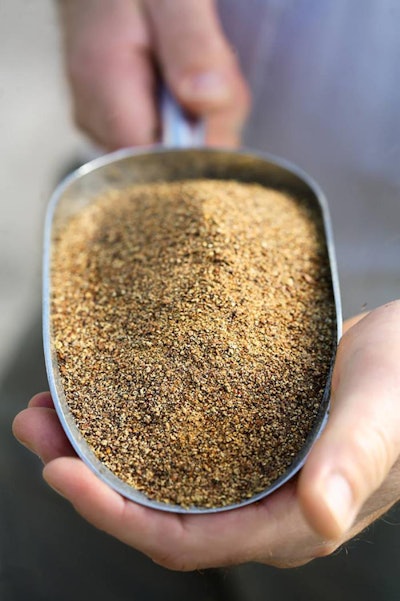
Fermented protein sources continue to emerge with benefits that are quite targeted to specific animal classes that require enhanced protein nutrition.
The abundance of rapeseed meal in Europe, due the ongoing efforts to reduce dependence on imported soybeans, has spurred a few innovative minds to further explore this ingredient. Rapeseed protein isolation is such an effort – mostly destined to human nutrition applications, whereas fermented rapeseed meal is another. The latter is for animal consumption, of course, as a source of protein replacing normal soybean meal and/or fermented soybean meal.
The benefits and issues of rapeseed meal have already been discussed in a previous blog, but it merits repeating here that European rapeseed meal is not necessarily the same as Canadian canola, although they are the same basic plants, if not varieties. In Europe, rapeseed varieties used today are mostly those rich in oil (as rapeseed oil is used as a bio-diesel additive) and thus, they may contain higher levels of certain anti-nutritional factors than canola. Again, this is a general observation.
Beyond the issues of feeding normal rapeseed versus normal soybean meal, it is of interest to discuss the role of fermentation in either product. In other words, whether the fermentation process that involves increased cost and thus higher end-price has something to offer in return. It is important to note that fermented soybean meal is already available, and results of feeding it to different classes of animals are quite variable, probably depending on the quality of the end product and/or the process followed.
The proponents of fermentation (usually that of solid-state method) argue that the properly fermented product contains more digestible protein, fewer anti-nutritional factors, and perhaps bio-active metabolites as a result of enzymatic or otherwise processing of feed components by the microorganisms doing the fermentation. They also point to a positive effect on gut microbiota, enhanced immune system activity, and overall animal health and performance.
In general, results so far tend to be more favorable in feeds for sensitive animals such as those being very young (chicks, piglets, calves, lambs, etc.), or those in reproductive age but still immature (pre-lay hens and gilts, for example). These observations are in accordance with general understanding of animal biology. Thus, it follows that it is in these feeds and animals that the extra cost of feeding fermented products, such as fermented rapeseed, may offer a substantial payback.
For example, in a recent trial (2019), gilts and sows were fed fermented rapeseed meal (unfortunately the trial did not include unfermented rapeseed meal as the control was soybean meal) in partial replacement of normal soybean meal (again, it would be nice to compare it with fermented soybean meal). Nevertheless, it was gilts that benefited the most out of fermented rapeseed meal in their gestation and lactation feeds. This was demonstrated by an increase in feed nutrient digestibility that led to more pigs born and heavier pigs weaned. This trial can serve as an example that illustrates modern thinking about enhanced protein nutrition in animals that require a bit of extra attention. Of course, the work on fermented protein sources continues and it is an interesting field of science, both applied and basic.

















